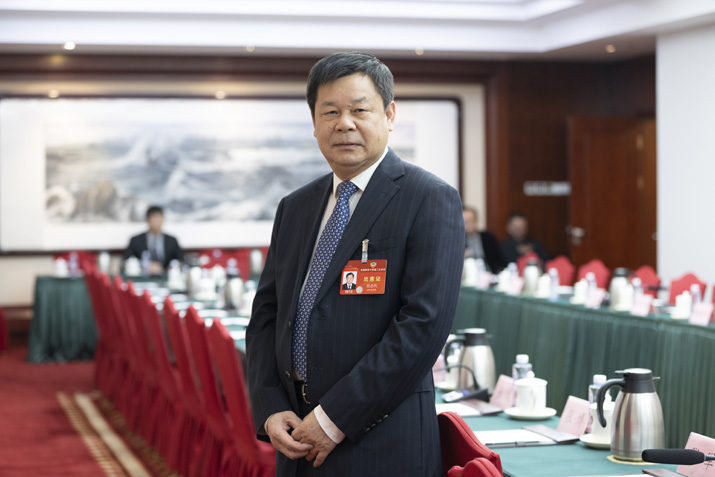
In a recent interview with Beijing Review, Du Zhanyuan, President of China International Communications Group (CICG) and a member of the Standing Committee of the 14th Chinese People’s Political Consultative Conference National Committee, shared his views on promoting better understanding between China and the rest of the world in the era of artificial intelligence (AI). Edited excerpts of the interview follow:
Beijing Review: How do you view the role of cultural exchange and people-to-people interaction in promoting mutual understanding?
Du Zhanyuan: The Chinese civilization has been renowned for its openness and inclusivity since ancient times. Achievements from the Arab and Western worlds, such as astronomy and calendars, intersected with China’s cultural symbols like tea, silk and porcelain on the Silk Road. The introduction of Buddhism from ancient India to China has had a profound impact on Chinese philosophy, art, architecture and social life.
Currently, profound changes unseen in a century are unfolding at an increasing rate, and, exchange and mutual learning between the world’s diverse cultures seem more important than ever. CICG has long been committed to promoting exchange and mutual learning between China and other countries. In recent years, it has organized international forums, exhibitions and other activities at home and abroad. It has also launched the Orchid Awards to recognize non-Chinese individuals and institutions that have made significant contributions to dialogue and exchange between Chinese and other civilizations.
What challenges and opportunities does AI pose for international communication?
AI will undoubtedly become the engine for a new wave of technological revolution. However, throughout history, technological innovation has been both constructive and counter-productive. For example, the data used to train AI models may contain biases, including demographic, historical and technological biases. Large language models generated based on this data may therefore produce content that exhibits those biases.
Whether the datasets of AI large models include Chinese data and to what extent different countries’ data influence the models can affect the way China is portrayed in AI-generated content. It is crucial international communication institutions keep an eye on the “double-edged sword” effect of technology in the arena of international public opinion. We need to use technological means not only to bridge the information gap but also to address the deficit of trust.
CICG has been piloting the application of AI in translation, publishing and communicating China’s ideas to the international community. It has initiated a metaverse laboratory to explore new frontiers. It has also joined forces with the Renmin University of China to experiment with big data in international communication.
Those who visit China are often surprised to find that the China they see with their own eyes is completely different from the China they see in Western media. How should we bridge the information gap in overseas audiences’ understanding of China?
I share this opinion with you. French entrepreneur Arnaud Bertrand, who has visited China more than 50 times since 2008, once said the negative attitude of many Western people toward China is more of the result of their lack of understanding of China; they are shielded from different opinions and instead fed with misleading images and information about China.
Currently, internationally influential surveys on public opinion regarding China are still dominated by Western polling companies and institutions. English-language information comprises over 70 percent of the content on the Internet, and the majority of international audiences rely on Western media for news about China. Meanwhile, the international community expects China to play a greater role in making the international order and global governance system more just and equitable, and expects to hear more Chinese voices on major issues.
In the current context where new technologies like AI are profoundly changing the communication landscape, the Internet and mobile social media have emerged as the center stage for international communication. This requires us to carry out international communication by making use of all platforms and forms to meet the multifaceted needs for information on China by international audiences. We should combine what we want to convey with what overseas audiences are interested in in thoughtful ways so that the Chinese narrative is well received. –The Daily Mail-Beijing Review News exchange item





